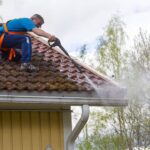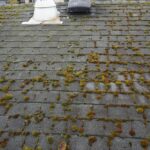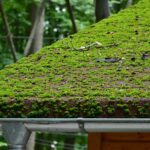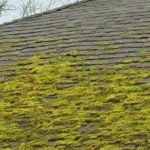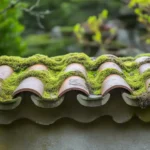Skylights are a beautiful addition to any home, bringing in natural light and enhancing the aesthetic appeal. However, if not properly sealed, they can lead to leaks and water damage. Knowing how to seal roof around skylights is essential for maintaining the integrity and value of your home. In this guide, we will explore various methods and tips for effectively sealing your skylights and preventing potential issues.

Understanding the Basics of Skylight Installation
Before we delve into how to seal roof around skylights, it is important to understand the basics of skylight installation. Proper installation is the first step in ensuring that your skylight remains leak-free. A well-installed skylight will have a reliable seal that prevents water from seeping in. For more details on installation, you can refer to this guide to roofing maintenance.
Materials Needed for Sealing Skylights
To seal your skylight effectively, you will need the right materials. These typically include:
- High-quality roof sealant
- Roofing cement
- Flashing tape
- Caulking gun
- Putty knife
Choosing the right materials will make the sealing process more effective and long-lasting.
Steps to Seal Your Skylight Properly
The process of sealing involves several important steps. Here is a structured guide to help you:
1. Inspect the Skylight and Roof Area
Begin by carefully inspecting the skylight and the surrounding roof area for any existing damage or vulnerabilities. Look for cracks, gaps, or worn-out areas that might allow water to seep in.
2. Clean the Surface
Clean the surface around the skylight thoroughly. Remove all debris, dust, and old sealant using a putty knife. A clean surface ensures better adhesion of the new sealant.
3. Apply Roofing Cement
Using a putty knife, apply a generous layer of roofing cement around the edges of the skylight. This acts as the first line of defense against leaks.
4. Use Flashing Tape
Apply flashing tape over the roofing cement. This provides an additional barrier and strengthens the seal. Press the tape firmly to ensure it adheres well.
5. Seal with Roof Sealant
Finally, use the caulking gun to apply roof sealant along the edges of the skylight. Choose a product that is weather resistant and designed for roof applications.
Additional Tips for Preventing Skylight Leaks
In addition to proper sealing, there are other measures you can take to prevent leaks around your skylights:
Regular Maintenance
Regular maintenance is key to keeping your skylights in top shape. You can learn more about regular roof maintenance by visiting this roof maintenance guide.
Utilize Quality Products
Invest in high-quality sealants and materials that are specifically designed for skylights. This ensures durability and effectiveness.
Consider Professional Inspection
If you are unsure about your sealing process or suspect a severe leak, consider hiring a professional to inspect and seal your skylights.
Frequency of Skylight Inspections
Regular inspections are crucial for identifying potential issues early. It is advisable to inspect your skylights at least once a year, preferably before the rainy season.
Conclusion
Knowing how to seal roof around skylights effectively is crucial for safeguarding your home from leaks and damages. By following the steps outlined in this article, and using quality materials, you can ensure that your skylight remains watertight and long-lasting. For more tips on handling roof-related issues, check out our guide on fixing minor roof sagging.

FAQ
1. How often should I check the seals on my skylights?
It is advisable to check the seals on your skylights at least once a year and after major weather events.
2. Can I use regular caulk for sealing skylight leaks?
While regular caulk can temporarily fix minor leaks, it is best to use a sealant specifically designed for roofing and skylights for a more durable solution.
3. Should I hire a professional for sealing my skylights?
If you are unsure or uncomfortable with DIY sealing, hiring a professional can ensure the job is done correctly and prevent future leaks.
This article contains affiliate links. We may earn a commission at no extra cost to you.




